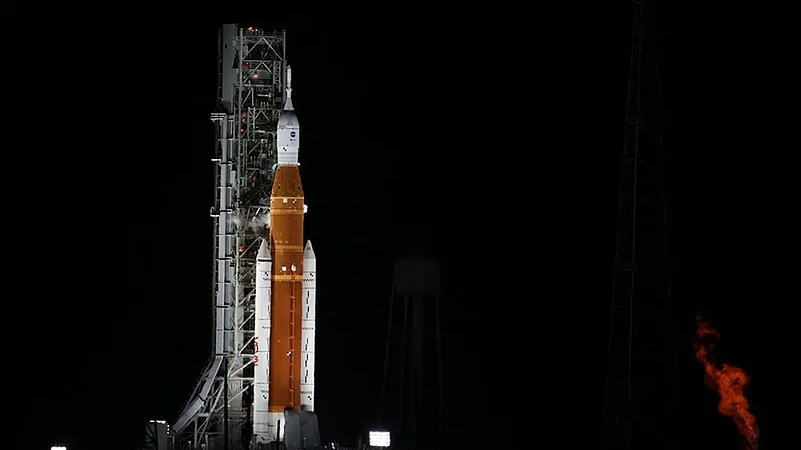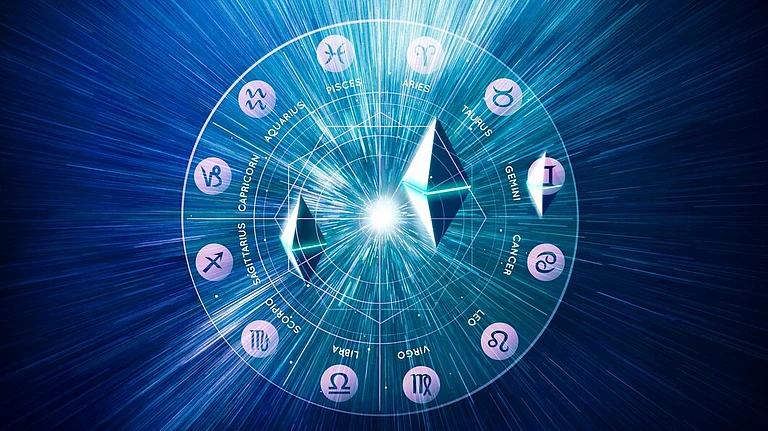The US space agency NASA on Monday postponed the launch of its Space Launch System (SLS) rocket because of a technical malfunction.
The SLS launch would have marked the beginning of NASA's Artemis program, the ambitious plan to send humans to Moon for the first time in over five decades.
Landing on the Moon would just be the first step for the Artemis program as NASA plans to make Moon the stepping stone of its journey to Mars and then further exploration of deep space.
Here we explain what's the Artemis program, why the rocket launch was cancelled on Monday, and how Artemis mission would mark the new dawn of space age.
What's the Artemis program?
Eugene Cernan holds the record to be the last person to have been on the Moon in 1972. But not for long as the Artemis program seeks to take humans to the Moon for the first time in over five decades — perhaps as early as 2025.
The Artemis program comprises of three missions, the first of which was supposed to be launched on Monday but was postponed.
Artemis I will send the Space Launch System (SLS) rocket into space to mark the beginning of the Artemis program. It is the world's most powerful rocket.
Artemis I is an uncrewed mission to test the functioning of the rocket. The SLS rocket will carry the Orion spacecraft on its nose. The rocket will drop Orion into space where it will travel past the moon and cover 1.3 million miles before splashing down on Earth at the end of its 42-days journey.
There will be three human models in the spacecraft, one of which will be in the commander's seat. These three models will be fitted with censors to check how the unprecedented space journey would affect the human body. It will help prepare for crewed missions in the next two stages of Artemis program.
"Helga and Zohar [names of two human models] are designed to measure the effects of radiation on women’s bodies in space, and Moonikin Campos [the third model] will sit in the commander’s seat to track just how bumpy a voyage to the moon might be for future human crew members," explains Vox.
Artemis II will be the first crewed flight test of the SLS rocket and the Orion spacecraft around the Moon, according to NASA.
Artemis II will make a journey similar to Artemis I but with humans. It would make history as it would take humans to their farthest point yet in space.
"Astronauts on their first flight aboard NASA’s Orion spacecraft will travel farther into the solar system than humanity has ever traveled before," said NASA.
The mission can be launched in 2024 and will pave the way for Artemis III which would finally land humans on the Moon.
Artemis III will make history by landing humans on the Moon for the first time in over five decades, with astronauts following the footsteps of Eugene and 11 men before him.
The landing on the Moon, however, is not the final goal, but a mere stepping stone of much more ambitious endeavour.
The dawn of the new space age
Unlike previous Moon missions, the Artemis III is not a brief exploratory expedition. It aims at establishing a long-term presence on Moon which would be the stepping stone in the journey to Mars.
"We will collaborate with commercial and international partners and establish the first long-term presence on the Moon. Then, we will use what we learn on and around the Moon to take the next giant leap: sending the first astronauts to Mars," said NASA.
The NASA will set up a "base camp" on Moon which would allow "robots and astronauts to explore more and conduct more science than ever before".
As for the stated objectives, the NASA said that they are "going back to the Moon for scientific discovery, economic benefits, and inspiration for a new generation of explorers: the Artemis Generation".
The program is therefore much more than merely sending humans on Moon. It is extending human presence from Earth to Moon and it could possibly be the first step in turning the human race into an inter-planetory specie.
Vox explains: "The Artemis program is laying the groundwork for an unprecedented level of activity on the lunar surface, including a human base camp, a series of nuclear reactors, and a mineral mining operation. NASA has expressly said that it wants to develop a lunar economy, and the space agency has also established the Artemis Accords, a set of principles for exploring the moon that more than 20 countries have now joined."
Space program catches up with the times
The earlier Moon missions were undertaken in context of the "space race" between the United States and the USSR in the Cold War period.
While the USSR beat the United States in putting the first man in space, the United States beat the USSR in the bigger race by putting men on Moon.
Since it was part of a Cold War-fuelled race, once dominance was established in space and the United States practically won the competition, the need was not felt to continue Moon missions and the missions stopped. Moreover, the missions were also rooted in the sociopolitical scenario of that age. All of the people to set foot on the Moon were white men. That's set to change.
The Artemis III would take the first woman and the first person of colour to Moon, according to NASA. The program would also not be stopped like earlier Moon missions were because there is no Cold War race to be won. The goals are much broader as stated above and are likely to grow further with time.
Cancellation of Artemis I explained
The dawn of the new age, however, depends on the success of Artemis I, which would pave the way for Artemis II and ultimately Artemis III.
But Artemis I's launch was postponed on Monday after engine malfunction and it might be further delayed until October.
The Verge reported that "NASA scientists determined that engine number three [of SLS] could not reach the appropriate temperature range to allow for a launch" and this led to the postponement. The engines need to be reach a very cold temperature to process the super-cold liquid fuel used in the rocket.
The issue was reported before the call to postpone was made and NASA had said at the time it was working to repair the problem. But troubleshooting was not successfull and the launch was eventually postponed.
However, this was not the first time that SLS encountered a problem. Earlier, there was a leakage during the fuelling of the rocket that had delayed its launch event.
"Fueling the core stage had encountered a slight hiccup when teams noticed what appeared to be a liquid hydrogen leak," reported Space.com, adding that NASA teams traced the leak and manually initiated the fuelling which was slower than the initial approach. It further reported that there was also another issue of a suspected crack in the part of the rocket that connects the liquid hydrogen and liquid oxygen tanks of the rocket.
Last January, engines of the SLS had failed one minute into a test. "Problems with the rocket, which is made by Boeing, first arose during a 'hot fire' test in January last year, when the engines shut down one minute into a scheduled eight-minute run," reported The Guardian.
What's next for SLS launch?
The next two windows of launch are on Friday and Monday. NASA has until then to repair the rocket and make it launch-ready.
But if that does not happen, then the launch could be delayed till October. The Verge explains that there is a 20-day period for launch of a rocket once it leaves Vehicle Assembly Building (VAB). Something called the 'flight termination system' of the rocket would need to be tested all over again if the 20-day period gets over. If the SLS is not launched by Monday, it would likely go back to VAB for such testing.
"That testing takes time, so if SLS is forced to come back to the VAB after rolling out in August, chances are it wouldn’t be ready to fly until late October," reported The Verge.
Moreover, NASA would not want to leave any chances as the entire success of the Artemis program hinges on the success of SLS and there cannot be any scope of error. Delay can be afforded. An error or ommission of a concern cannot be.
The high-profile launch event
Vice President Kamala Harris was at the site of the launch of Artemis I. She also chairs the National Space Council.
As many as 2.5 lakh people reached the Florida coast to witness the launch of Artemis I, according to The Guardian.
While the launch was postponed, Harris surveyed the preparations for Artemis II and III, the next phases of the Artemis program, affirming the government's faith in the program despite Monday's malfunction.
Harris also met Josef Aschbacher, Director of the European Space Agency (ESA). He presented to her the 2nd European Service Module, "tasked to take astronauts around the Moon on Artemis II".


























